MSI Cubi 2 Kaby Lake UCFF PC Review
by Ganesh T S on December 30, 2016 3:30 PM ESTPower Consumption and Thermal Performance
The power consumption at the wall was measured with a 1080p display being driven through the HDMI port. In the graphs below, we compare the idle and load power of the MSI Cubi2-005B with other low power PCs evaluated before. For load power consumption, we ran the AIDA64 System Stability Test with various stress components, as well as our custom stress test with Prime95 and Furmark, and noted the maximum sustained power consumption at the wall.


Even though Kaby Lake-U is touted to be very power efficient (and has been proved in some of the preceding sections), it looks like the BIOS could do with some tweaks for better idle power consumption. On the load side, we found Prime95 + Furmark providing the higher sustained power consumption number, as shown below in our thermal stress routine.
Our thermal stress routine starts with the system at idle, followed by four stages of different system loading profiles using the AIDA64 System Stability Test (each of 30 minutes duration). In the first stage, we stress the CPU, caches and RAM. In the second stage, we add the GPU to the above list. In the third stage, we stress the GPU standalone. In the final stage, we stress all the system components (including the disks). Beyond this, we leave the unit idle in order to determine how quickly the various temperatures in the system can come back to normal idling range. The various clocks, temperatures and power consumption numbers for the system during the above routine are presented in the graphs below.
We repeated the same observations with our legacy stress test using the latest versions of Prime95 and Furmark - Prime95 v28.10 for 30 minutes (after launching with the max. stress option), followed by Furmark v1.18.20 for 30 minutes. The Prime95 load is then removed, allowing just the GPU alone to be stressed for 30 minutes. The system is then left idle.
According to the official specifications, the junction temperature of the Core i7-7500U is 100 C. We find that the temperature is briefly reached with the Prime95 AVX2 workload. The package power also goes upwards of 20W in this case. However, the power limitation soon kicks in, and the package power is held stable at 15W throughout the stress workload. In the case of the AIDA64 SST (which is not pure AVX2 for the CPU stress case, but, more of an all-round test case), the package power is never more than 15W, and the core temperature stays around 80C.
On the whole, the Cubi 2's thermal solution is geared for a 15W TDP CPU. This is acceptable for almost all consumer use-cases, but, results in the performance numbers of the BRIX-series with cTDP-Up SKUs being better.


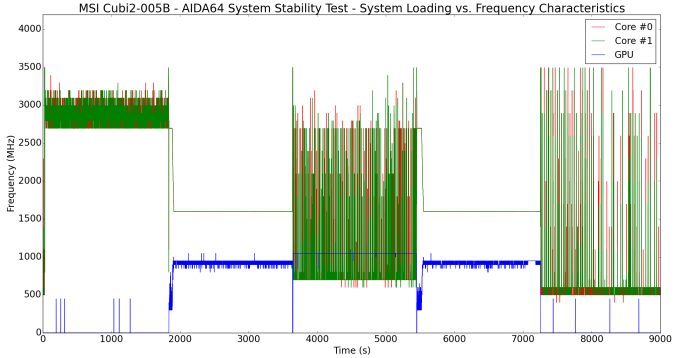
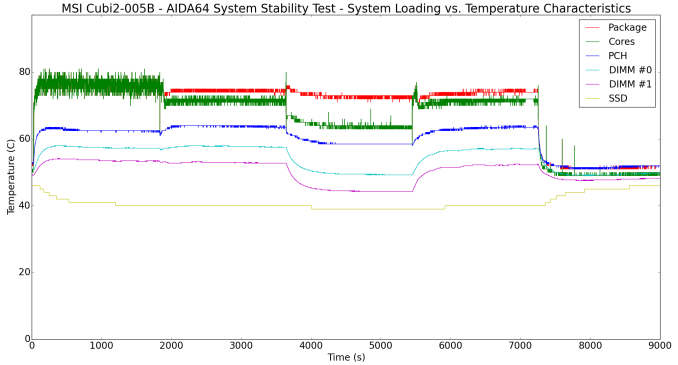
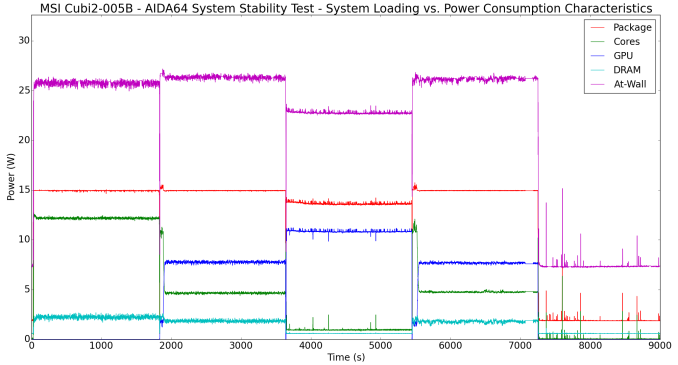

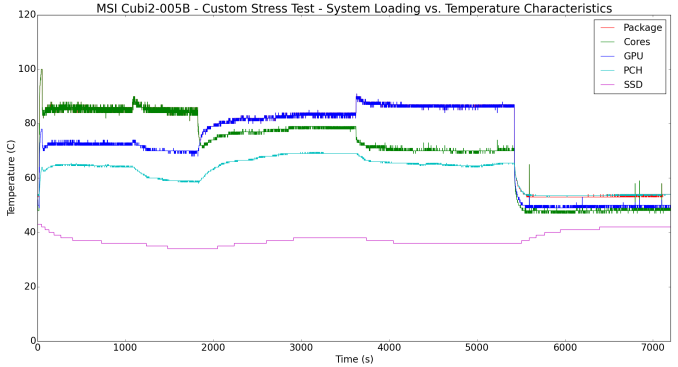
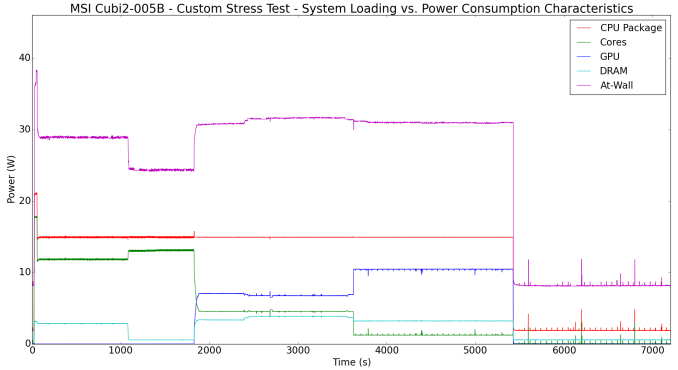








32 Comments
View All Comments
voicequal - Saturday, December 31, 2016 - link
I just spent 20 mins looking at the power & thermal charts. It's fascinating to see how the CPU & GPU clock respond to the shared 15W power and thermal budget of the integrated package. Time 1800-3600 shows how the GPU steals performance from the CPU, resulting in the CPU clock dropping to 1.2 GHz, far below the Core i7-7500U spec of 2.7 GHz. I've always thought it misleading to claim this a 15W 2.7GHz CPU, when this is only the case if GPU utilization is negligible.niva - Tuesday, January 3, 2017 - link
That is indeed interesting, but the whole i7 label on these chips is misleading in my opinion.BrokenCrayons - Tuesday, January 3, 2017 - link
I know right. There've been i7 dual core processors since 2010 or so and despite all those years, it's still dreadfully complicated and confusing. Intel is so hush-hush about specifications too. They don't publish anything about the CPU specs. It's like they're all mysterious black boxes.Robalov - Saturday, December 31, 2016 - link
If it's same as cubi 1, the heat sink fan mounts are soldered onto the pcb.They're weak and fall off. The system will barely last to warranty and is difficult to repair.
Kakti - Friday, December 30, 2016 - link
"We didn't evaluate 4K Netflix streaming on this PC because there is no HDCP 2.2 support."Intel really dropped the ball in regards to their Y and U chips not being able to decode HDCP 2.2 streams. Do we know if the 200-series chipset for LGA 1151 Kaby Lake processors will include native HDCP 2.2 support, or will it be the same story there?
vlado08 - Saturday, December 31, 2016 - link
At the end of the review: "Over the next few months, we will be reviewing a few more Kaby Lake-U PCs that bring in features like HDMI 2.0b and full Netflix 4K support with HDCP 2.2"Pazz - Saturday, December 31, 2016 - link
In respect of the HDCP 2.2, Ganesh is referring to the Beebox-S and BRIX Kaby Lake models which both feature a LSPCon.fanofanand - Friday, December 30, 2016 - link
I'd still rather have the skulltrail unit1_rick - Friday, December 30, 2016 - link
You mean the skull canyon NUC? It's pretty awesome--I have one. With 16GB of RAM you can run two simultaneous VMs running small SQL Server database as well as light gaming in the host OS. You wouldn't want it for high-end gaming without an eGPU, but for everything else, it's pretty sweet.fanofanand - Saturday, December 31, 2016 - link
That's the one! It is similarly priced but even a year later holds it's own with the iris GPU